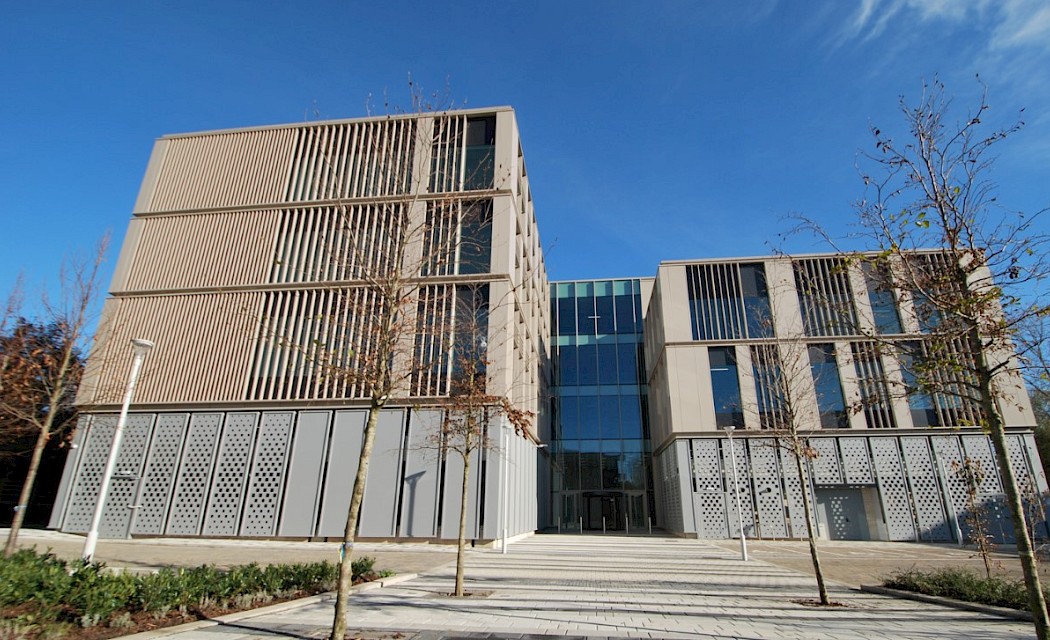The Ellison Institute of Technology (EIT) will be the first organisation to move in to the new Iversen Building at The Oxford Science Park. It will take over the top floor of the 86,000 sq ft three-storey facility from next month (April).
EIT, a centre set up to accelerate innovation and address some of the world’s most pressing problems, is continuing to expand its Oxford campus and research laboratories at the science park. Later this year will be putting the finishing touches to its Generative Biology Institute where 300 research staff will work.
The Oxford Science Park (TOSP) is one of the key locations within the Oxfordshire life sciences ecosystem and is home to 100 companies. It has a development pipeline of more than 600,000 sq ft, all due to be delivered by the end of 2026.
A key work in progress is the 450,000 sq ft Daubeny Project Offering premium lab space, with 70% wet lab capacity, it will complete in 2026. Described as TOSP’s most ambitious development to date, it is named after Charles Daubney, a pioneering scientist who in 1842 founded the Daubney Laboratory, one of the earliest dedicated chemical laboratories at Oxford.
Construction will begin early next year on the Leggett Building, adjacent to the Iversen, providing 78,800 sq ft of laboratory and office space.
Jamie Renison from real estate firm Cushman and Wakefield, said: ‘The Oxford Science Park promotes a culture of innovation and development among its community, offering science organisations the scope and opportunity to scale within the park itself.’
More facts about The Oxford Science Park
- Home to major international businesses like Oxford Nanopore and Exscientia
- Many life science start-ups, including 90% of those from the University’s Medical Science BioEscalator, choose TOSP and benefit from its collaborative and collegiate ethos
- Since January 2020, businesses based here have raised over £2.5bn for new R&D
- In 2024, 1 in 8 of the Oxfordshire companies successfully raising funds were part of TOSP community
- 3,350 people work on site
- Since 2021, 37% of life science venture capital invested in Oxford has gone to TOSP-based companies
- Last year, TOSP accounted for 53% of wet lab take up in Oxfordshire
- The land is owned by Magdalen College and many of the science park’s buildings are named after the college’s Nobel Prize winners such as Sir Charles Sherrington, Dr Erwin Schrödinger, Professor Howard Florey, Sir Robert Robinson, Sir Peter Medawar, Sir John Eccles and Sir Anthony Leggett.
